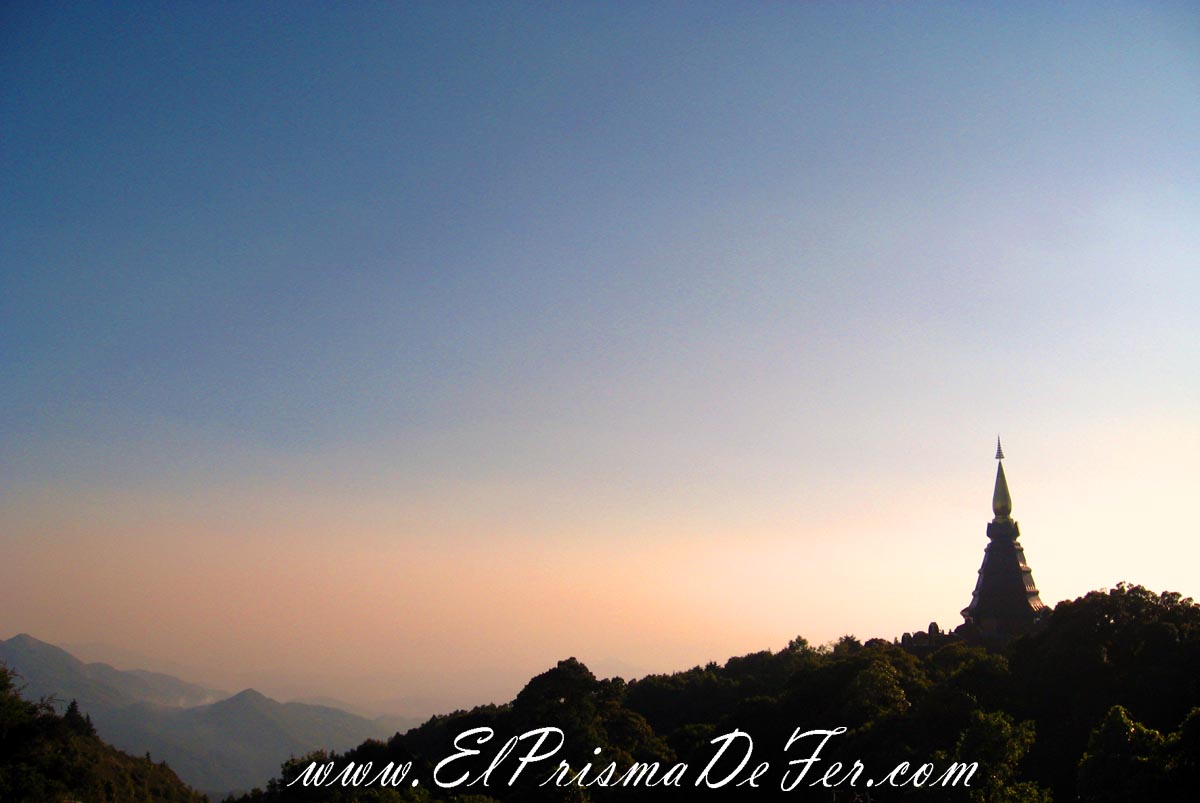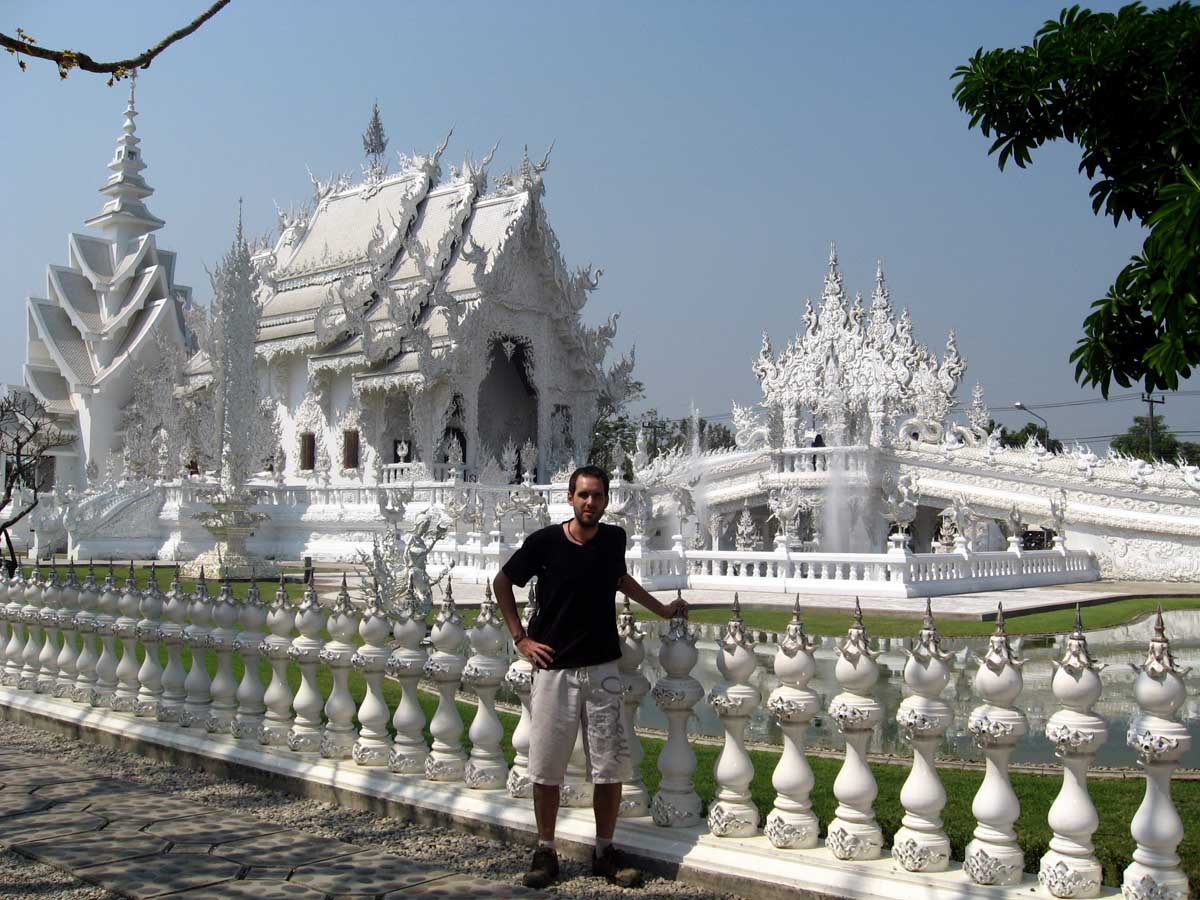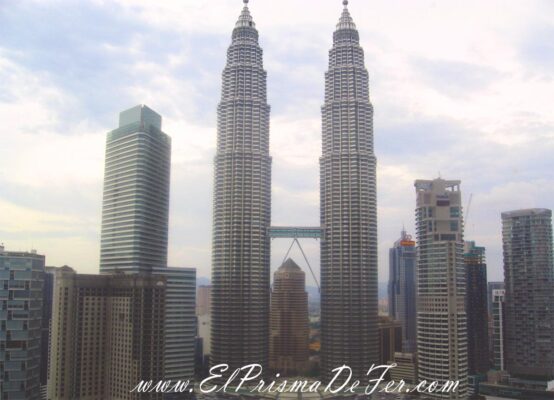Thailand is, for many, the gateway to Southeast Asia. A country where golden temples and picture-postcard beaches, chaotic markets and lush jungles, vibrant cities and peaceful villages coexist. In this post, I share my 3-week itinerary for Thailand, a route that seeks to combine the best of the mountainous north, the historic center, and the paradisiacal islands of the south.
During the tour, I was able to enjoy Chiang Mai, get lost in the alleyways of Bangkok, discover ancient ruins in Ayutthaya, and relax on the dreamy beaches of the Andaman Sea. All this while traveling by land and water. If you're planning your trip to Thailand and want some ideas to get organized, this itinerary can serve as a guide.

Table of Contents
Areas to visit in Thailand
To make the most of three weeks in Thailand, it's ideal to divide your itinerary into three main regions: the jungle-filled and mountainous north, the center with its capital and history, and the beachy south. Each offers a completely different experience, and together they provide a very comprehensive overview of the country.
Northern Thailand
With Chiang Mai at its center and its surroundings, it's perfect for those seeking ancient temples, local markets, mountains, nature, and an immersion in the quieter Thai lifestyle. From here, you can also take excursions to Chiang Rai, Pai, or even trek through rural villages.

Central Thailand
Led by Bangkok, it's the chaotic urban heart of the country. A city that blends modernity and tradition with majestic temples, street food, skyscrapers, and canals. Nearby is Ayutthaya, an archaeological gem with Buddhist ruins well worth exploring.

Paradise South
The south is synonymous with beaches. Both the Gulf of Thailand (like Koh Tao or Koh Phangan) and the Andaman Sea (with Krabi, Railay, or the Phi Phi Islands) offer white sands, turquoise waters, imposing cliffs, and a relaxed vibe perfect for ending your trip in relaxation mode.
My favorite experiences in Thailand
Since I'm not particularly a beach lover, although I recognize that they are truly idyllic in Thailand, what captivated me most about the country were other corners. Bangkok, despite the chaos, I really liked: its golden temples, floating markets and that vibrant mix of tradition and modernity have a particular charm. Plus, a day trip to the ancient city of Ayutthaya also adds a plus to this part of the country.

But without a doubt, the north was what I enjoyed the most. Chiang Mai seemed like a city with a special energy: peaceful but with lots to see, ideal for getting lost in its temples, markets, and cafes. And Pai, a small town in the mountains, surrounded by nature, completely captivated me. The scenic routes to get there, the fields, waterfalls, and the relaxed vibe of the place made me want to stay longer than planned.

Thailand travel itinerary map
3 week Thailand itinerary details
Days 1-5: Bangkok and Ayutthaya
Bangkok was the gateway to my two-month trip through Southeast Asia. I stayed a couple of days exploring the city, letting myself be carried away by its golden temples, the Grand Palace, the floating markets, and that vibrant chaos that, although overwhelming at first, ends up enveloping you. From there I made a getaway to Ayutthaya, an ancient royal capital steeped in history, where the temple ruins and Buddha statues among the roots make you feel like you're in a movie.
Days 6-9: Chiang Mai
Afterwards I took a night train to Chiang Mai, in the north of the country. It's a charming city, quieter than Bangkok but just as rich in culture. I particularly liked the relaxed atmosphere of the old town, surrounded by walls and moats, and the huge number of temples there are to discover on foot. From there, I went on a motorbike to explore Doi Inthanon National Park, home to Thailand's highest peak. The royal pagodas and waterfalls were a perfect blend of nature and spirituality.
Days 10-12: Pai
Then I continued my journey to Pai, a small hippie village in the mountains, ideal for a few days of rest. There I rented a motorbike and toured the surroundings: waterfalls, green fields, hot springs and the famous Pai Canyon at sunset. The pace is relaxed, the people friendly, and the scenery picture-postcard.
Day 13: Chiang Rai and the White Temple
The route through the north ended with a brief visit to Chiang Rai, to see the White Temple (Wat Rong Khun), a work as surreal as it is fascinating. From there, I crossed the border into Laos by land.
Days 14-21: Southern Beaches
A few weeks later, after traveling through Laos, Vietnam, and Cambodia, I returned to Bangkok and took a sleeping bus to Krabi, in the south of the country. I spent a week getting to know its paradisiacal islands and beaches, and although I am not a fan of beach tourism, I admit that these are some of the most beautiful I have ever seen in my life:
- Tonsai: This is a more alternative and quieter spot, very popular with climbers. Its cliffs and relaxed atmosphere make it special.
- Railay: Only accessible by boat, it combines impressive cliffs with white sand beaches. It's very photogenic, although a bit more touristy.
- Koh Phi Phi: famous (and rightly so) for its beauty. Although crowded, its crystal-clear waters and rock formations still amaze. Ideal for snorkeling or a tour.
- Koh Lanta: It has long beaches, less crowded, a more local atmosphere, and it's easy to rent a motorbike and get lost on the island.
Finally, from Koh Lanta I crossed by ferry and then took a night train to the capital of Malaysia, Kuala Lumpur, to continue the adventure for a couple more days.
Support The Prism of Fer!
Your support helps me continue creating free content on the blog. Thank you so much!





